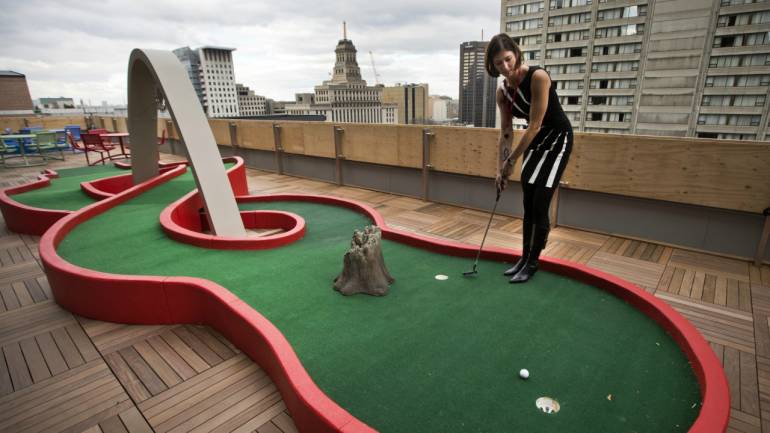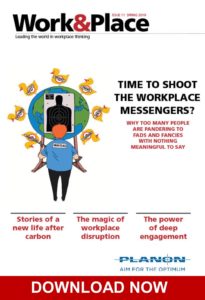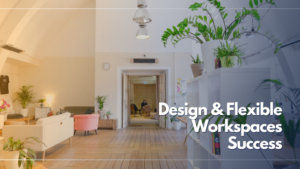Adapting the work environment to ‘work’
As the innovation economy began taking shape and connectivity ensured work was no longer done just at a desk, companies realised the need to drive mobility and flexibility in the built environment. Collaboration and networking to create new ideas, products and solutions are critical to drive new business, attract and retain talent as well as enhance productivity. Activity-based working has gradually become the norm, wherein employees do not have assigned workstations; rather, workspaces are defined based on the activities that allow employees to conduct specific tasks. It is estimated that by 2025, millennials will represent 75 percent of the global workforce, which means that not just the workstation, but many areas throughout the work environment must become adaptable to different employee preferences.
Emergence of the hospitality mindset
The hospitality model acknowledges that the pressures of life affect performance in the workplace and the provision of amenities and services will help employees better focus on high-priority business issues. Transport, gym and fitness facilities, varied food and beverage outlets, concierge services, car parking, mothers’ rooms, onsite food and beverages, nap pods and play areas are no longer good-to-have amenities, but a critical component of the built environment to make the workplace attractive and ‘sticky’. Technology giants are spending billions of dollars to create campuses offering these facilities, while relatively smaller companies are relying on expensive CBD locations and landlords to provide the infrastructure.
In order to attract and retain talent, companies realised the need to provide work environments that reflected their culture and created a sense of identity. Workplace design has been adopting hospitality elements that focus on social engagement and guest experience to create delight and drive innovation. These architectural and visual elements are also a key component of change management, which allows employees to transition from the loss of personal space to adoption of shared spaces. Companies have realised tangible benefits in the form of reduced absenteeism, reduced employee turnover, and higher productivity through workplace wellness by use of natural light, indoor plants, strategic use of colours and water as well as other natural elements, which are again heavily inspired by hospitality design.
Redefinition of flexible workplaces
While the concept of flexible workplaces has been in existence for several decades in the form of business centres, the start-up revolution placed the need for workplace mobility at the forefront of business requirements. Beyond helping employees with room scheduling and offering workstations on demand, flexible workplace operators disrupted conventional real estate practices by offering workplace-as-a-service on a membership model.
While larger companies can provide a campus environment with all facilities for work and fun to ensure people spend maximum time at the workplace, flexible workplace operators are stepping in to provide the same experience for every occupier, regardless of scale. In addition, these operators provide a seamless community experience for networking as well as the convenience of working across locations based on the member’s mobility needs. It is not surprising, therefore, that a significant proportion of flexible workspaces are being taken up by global multinationals through enterprise deals. With more than 300 operators in India, the flexible office market is likely to grow to 9 million sq. ft. in the next three years from the current 5 million sq. ft. With a growing portfolio of services designed to extend the experience to existing offices, companies are further likely to outsource their real estate requirements to these operators which offer one-stop service, unmatched employee experience and significant cost savings.
The ‘office’ of the future
With data analytics and artificial intelligence providing greater insights on occupancy, productivity, sustainability, fitness, diet preferences etc., the design and format of workplaces will constantly keep moving away from the traditional ‘office’ towards an aspirational social hub for collaboration and engagement, with the flexibility to work and play anywhere and anytime. Workspaces will be closely integrated with hospitality, retail, clubbing and entertainment spaces to create an integrated ecosystem that is flexible, interchangeable and adaptable. The emerging drivers of disruption will continue to challenge the concept of workplaces as well conventional commercial real estate business models. For those curious about the ‘office’ of the future, there might not be one – at least the way we know it today.
The author is a senior director (Head-Consulting), Colliers International India.
Author:
Originally Published on October 21, 2018 at 08:05PM
Article published originally via “flexible office” – Google News https://www.moneycontrol.com/news/business/real-estate/how-offices-of-the-future-will-become-social-hubs-for-collaboration-and-engagement-3069541.html




